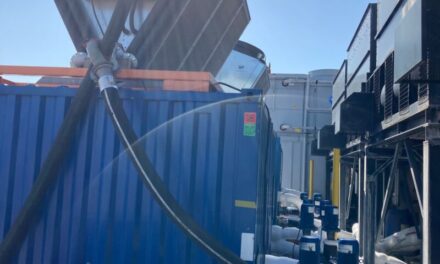 After reading this, you’ll want to disrupt your current sales strategy – or at least consider doing so. Not because you’ve got it wrong, but because you’re probably leaving money on the table without knowing it. Let me explain…
After reading this, you’ll want to disrupt your current sales strategy – or at least consider doing so. Not because you’ve got it wrong, but because you’re probably leaving money on the table without knowing it. Let me explain…
Chances are, like most machine builders, you’re relying primarily on product sales to meet revenue targets. But there’s another revenue stream to be monetised – service revenue. And it’s likely to eclipse your product revenue.
Time To Face The Strange Servitisation Changes
The traditional sales model is to sell a product and the customer pays. But it’s not a relationship – it’s a transaction. In a globally competitive market, products are commoditised and margins are squeezed, diminishing leverage from such production-centric approaches. It’s a dead end path for growth unless you can significantly differentiate with a specialist or unique product.
‘Servitisation’ – the delivery of a service component as an added value when providing products –transforms companies from production to service provider, shifting them to delivering advanced services, such as selection, consumables, monitoring, repair, maintenance, and disposal. It also provides the opportunity to increase service revenues even further by supporting existing third party or competitive products. This creates an ongoing relationship with the customer that effectively locks out competitors. And as we enter the era of the Internet of Things, your products will be able to alert your service technicians about their service requirements in increasingly predictive ways.
A Gold Mine Under Your Nose
Speaking of service technicians, there’s a strong likelihood either your field service reps – or those of your distributors and partners – know much more opportunities in your installed base than your sales team. Service reps are usually the only human touch point customers have with your company, coming into contact with them multiple times in the lifecycle of the product. They know patterns and timing of demand for replacement products, drive consumable sales and add to your competitive knowledge. They can also see what competitive equipment is installed onsite and identify opportunities. That’s why service departments are shifting from cost centres to profit centres.
When my colleague ran a service department at Pitney Bowes, he used to say if he gave a salesperson £10 and said go and drum up some leads, they wouldn’t be able to do much with it. But if he said spend the £10 on buying your service rep breakfast, they’d find a treasure chest of leads.
By empowering your service technicians with cloud-based, real time tools in the field they can do work-orders, request parts, schedule and be scheduled, look up manuals, take payments, renew maintenance agreements, use social channels to communicate problems swiftly and effectively and upsell and cross sell products and solutions where appropriate. All of this is done on a smart phone or a tablet. All the data is real-time. And customer relationship management systems pick up the information and ensure that the customer receives future communications, advice, updates and education. And of course all of that data is delivering valuable new insights about your businesses and customers.
Show Me The Money!
Of course, nobody cares about new business models unless they deliver. So let me give you some hard numbers. Average service margins are nearly 11% higher than equipment margins. Servitisation delivers a 5-10% jump in annual services revenue, profits two to three times greater than those on product sales alone, cost reductions for customers as high as 30%, as well as the opportunity to increase service revenues even further by supporting existing third party or competitive products. This creates an ongoing relationship with the customer that effectively locks out competitors.
And a good field service management system can deliver a 22% increase in service revenue, a 19% decrease in average repair time, and a 12% increase in contract renewals. And according to IDC, 70-90% of the total lifetime cost of heavy equipment lies in maintenance and repair.
Getting From Here To There
So how do you get from here to there? IoT is answering that question for you. With sensors now becoming embedded in almost all aspects of equipment, it’s just a matter of time before they make their way into mainstream machine building.
At ServiceMax, we not only provide a platform for managing IoT-enabled field service management, but we also work directly with companies to help them with their servitisation strategy, and we’re directly imputing into courses on the servitised business model with Cranfield University.
Five years ago, if you’d asked a room full of machine builders if they thought field service management could drive high EBIT and profit levels, spearhead new revenue growth, help outperform the competition, and eclipse product sales through service revenue, almost nobody would have raised their hand. Today, that’s all changing.
It’s time to take a look at your service department with fresh eyes and harness the significant contribution it can make to your strategic growth.
Mark Homer, Vice President Global Customer Transformation for field service management specialist, ServiceMax.



